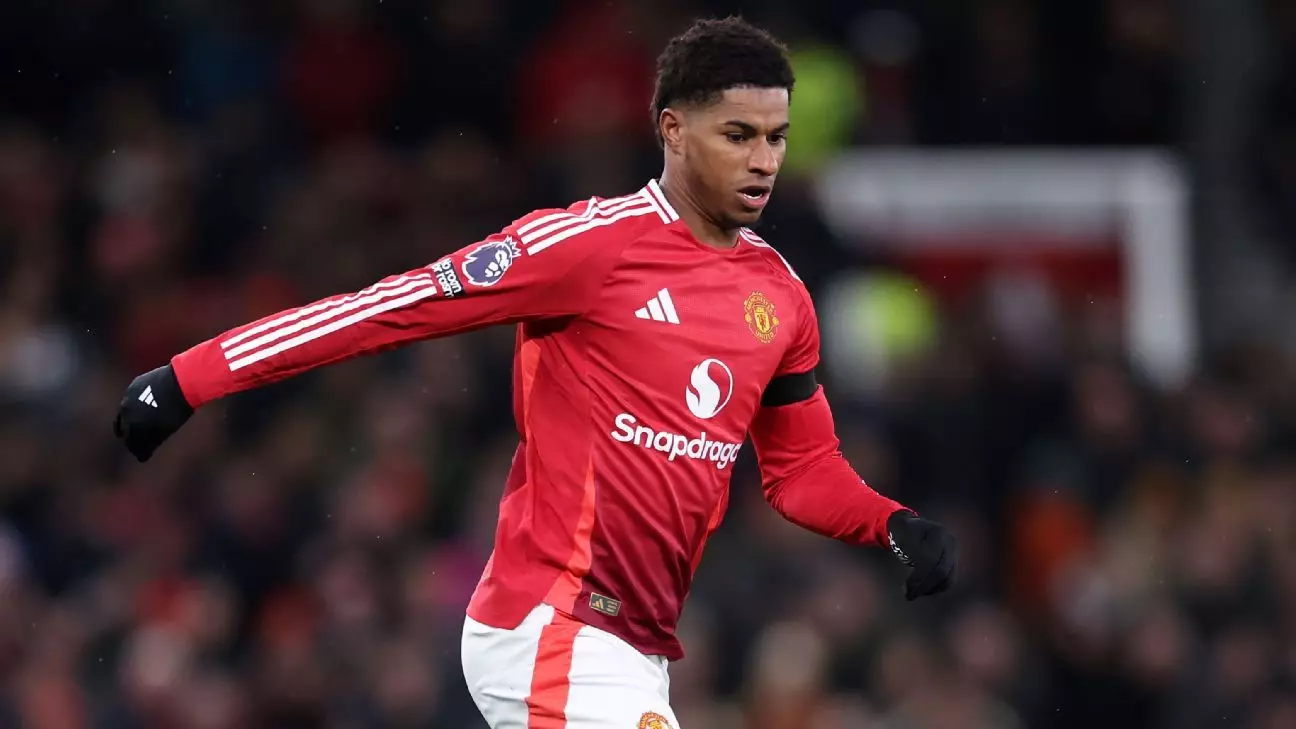In an era where player transfers have become a spectacle unto themselves, the world of football is witnessing an intricate dance of negotiations, ambitions, and potential reunions. Clubs across Europe are evaluating their squads, weighing risks against potential gains, and the transfer protocols that govern these movements. With every rumor and speculation that surfaces, excitement mounts among fans and stakeholders, but beneath the surface lies a landscape riddled with complexities.
AC Milan has emerged as a potential destination for Manchester United’s Marcus Rashford, but the ambition to secure his services is accompanied by substantial hurdles. Reports indicate that Rashford’s current salary with the Red Devils is a significant consideration, posing a challenge for the Italian club, which is already navigating its own financial constraints. The situation underscores the evolving dynamics of player wages in modern football. While both clubs may be open to a deal, it raises pertinent questions about how financial realities impose restrictions on clubs, especially in Italy, which has historically struggled with operating at a profit compared to its Premier League counterparts.
In an attempt to facilitate this move, Manchester United might consider subsidizing Rashford’s salary to ease his transition to the Serie A side. Such a scenario reflects the growing prevalence of collaborative strategies between clubs during transfer negotiations, often driven by financial pragmatism rather than purely on-field considerations. Additionally, AC Milan’s interest in Borussia Dortmund left-back Almugera Kabar demonstrates their commitment to enhancing depth in key positions, highlighting a broader trend in football where clubs prioritize versatile young talent to complement their established stars.
In another intriguing twist, Manchester United’s potential pursuit of Sporting CP’s Viktor Gyökeres and Gonçalo Inacio emphasizes the tactical foresight of coach Ruben Amorim. The prospect of reuniting with familiar faces speaks to the distinct cultural and strategic alignment that players often favor in new environments. Amorim has reportedly assured Sporting CP’s management that he wouldn’t poach their players mid-season, but the summer transfer window shimmers with possibilities for the acquisition of both Gyökeres and Inacio.
This impending reunion is not merely a matter of talent acquisition but also a calculated move to cultivate a synergistic team environment, fostering chemistry that assists both player performance and team cohesion on the pitch. Such reunions can lead to quicker acclimatization within the squad and an understanding of tactical philosophies already in place, thereby reducing the time it takes for newly obtained players to influence the team’s success.
The anticipated shift of Nuno Mendes from Paris Saint-Germain to Manchester United amplifies the competitive nature of Europe’s top clubs. The speculation surrounding Mendes and his potential replacement, Alejandro Balde of Barcelona, illustrates the ongoing game of musical chairs that elucidates the complexities of the transfer landscape. The potential for such transfers hinges on numerous variables, including player performance, contractual obligations, and the clubs’ strategic manoeuvres in response to market conditions.
Meanwhile, the prospect of Federico Chiesa’s loan move to Napoli underscores another dimension of the transfer process—by leveraging temporary arrangements, clubs can assess player fit within their systems without committing to long-term contracts. As players navigate the spectrum of their professional careers, these opportunities allow for rehabilitation of their playing status and evaluations of their readiness to re-enter competitive domestic landscapes.
Cristiano Ronaldo’s contemplative stance regarding his future is emblematic of the broader discourse about legacy, ambition, and the pressures of performance at the highest level. While his exploits with Al Nassr in Saudi Arabia have garnered attention, doubts linger about the club’s capacity to contend for continental titles, namely the AFC Champions League. Ronaldo’s decision-making process extends beyond immediate concerns, potentially even encompassing plans to retire after the 2026 World Cup.
Ronaldo’s situation encapsulates the realities of elite athletes grappling with the intersection of professional fulfillment and market desirability, as well as the pressures to maintain prominence in an ever-evolving football narrative. His possible return to his home country of Portugal or a move back to European football serves as a reminder of the era’s insatiable demands on player identity and trajectory.
The confluence of ambition, financial realities, and strategic foresight creates a vibrant tableau of narratives in the world of football transfers. As clubs like AC Milan, Manchester United, and others navigate these waters, the ripple effects of each decision reverberate across leagues and fan communities, binding the global football ecosystem in a shared anticipation of what each new season and transfer window will unveil.

